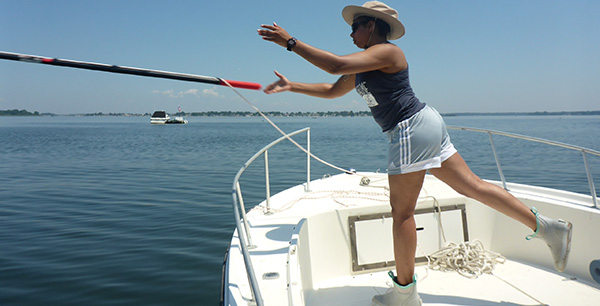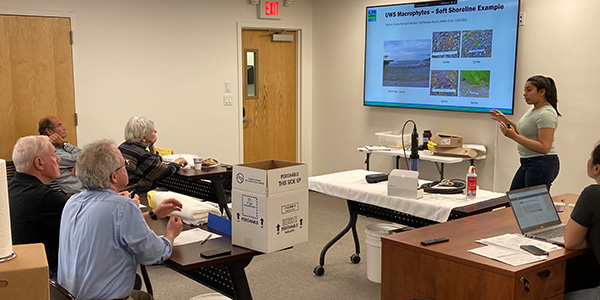
It all starts with the footwork.
“Your feet should be about shoulder-width apart, maybe a little wider,” said Ameera Khan, who went on to detail the proper placement of the dominant hand, and the non-dominant hand, the release, and the follow-through.
It was a tutorial in technique that her audience seemed to appreciate. One attendee characterized a photo of Ameera’s toss as “perfect form.”
If it were a normal Spring Saturday, it’d be easy to imagine such praise offered up amid the backdrop of bowling alley clamor. Ameera, after all, is the anchor of her local team, a position in the lineup reserved for the best and most clutch bowler, much like a relay team’s fastest runner is slotted in the anchor leg.
But Ameera and her 184.65 average weren’t talking shop along the oiled lanes of West Haverstraw or Bergen County in her spare time. This was a workday, and the demonstration was one of a series that took place throughout April in the lobby of our Larchmont office. Our Environmental Analyst wasn’t teaching the basics of bowling ball delivery. She was showing a roomful of volunteers the fundamentals of something way more scientific – how to toss a rake.
“It’s a whole routine,” said Ameera, who for the first time was leading the preseason training sessions for our Unified Water Study partners, who were able to attend these trainings in person for the first time since 2019.
You want to make sure the tines are face down when you launch the 60-inch rake, ideally two or three rake lengths from the boat (Ameera’s tosses can approach 30 feet). This way, they are positioned to rake the bottom of a monitoring station and, while being dragged slowly back to the boat by an attached line, gather a representative sample of macrophyte cover – the kind of aquatic plants growing in a particular location.

Macrophyte collection is just one of the data points collected during a UWS outing, and rake-tossing was just one of the topics covered during the full-day trainings. A parade of partners found their way to Larchmont to learn about Chlorophyll a filtering, how to prepare and use the equipment we provide (like calibrating the new multiparameter sondes used to record temperature, dissolved oxygen, conductivity, and other water quality metrics), and recording their data in a manner consistent among groups across the Sound. That consistency is the aim of the Unified Water Study, which Save the Sound has coordinated since 2017 to provide apples-to-apples data on the health of embayments all around the Sound.
Twenty-seven groups (including Save the Sound) will monitor 46 bays and harbors during the 2023 Unified Water Study season, which begins on May 1. There’s one new partner this year. Project Oceanology will monitor two sites: the Poquonnock River on the eastern border of Groton-New London Airport, and Mumford Cove, one embayment up the Connecticut coast – making the seventh season of the UWS its biggest in terms of participation and coverage.
As the UWS continues to grow, so does the importance of ensuring the standardization of monitoring protocols and procedures. The return to in-person training certainly helps. It also benefits that “unified” part of the Unified Water Study – and not just through the presentations conducted by Ameera and her colleagues, Laboratory Manager Elena Colón and Director of Water Quality Peter Linderoth.
“I thought there were a lot of great discussions between the groups,” said Ameera. “They had the chance to share each other’s methods and best practices.”
We use the data gathered in the Unified Water Study to develop our biennial Long Island Sound Report Card. We released the latest version last November, using data gathered in 2021. You can download Save the Sound’s 2022 Report Card here or take a deep dive into historical data through our Sound Health Explorer.
